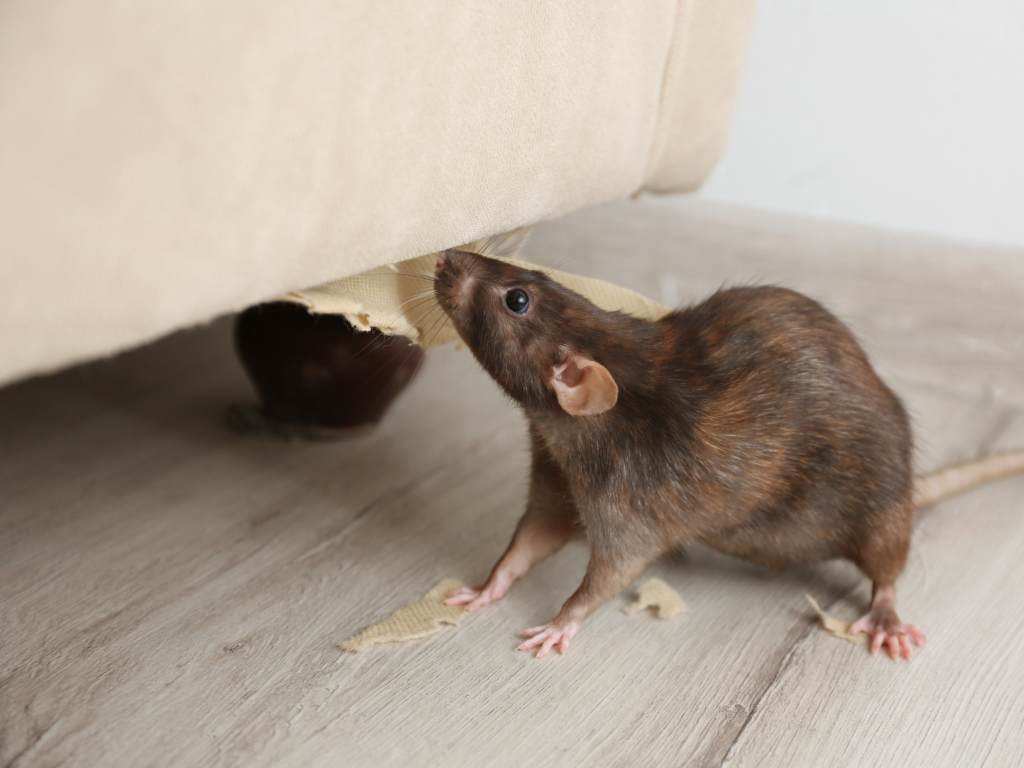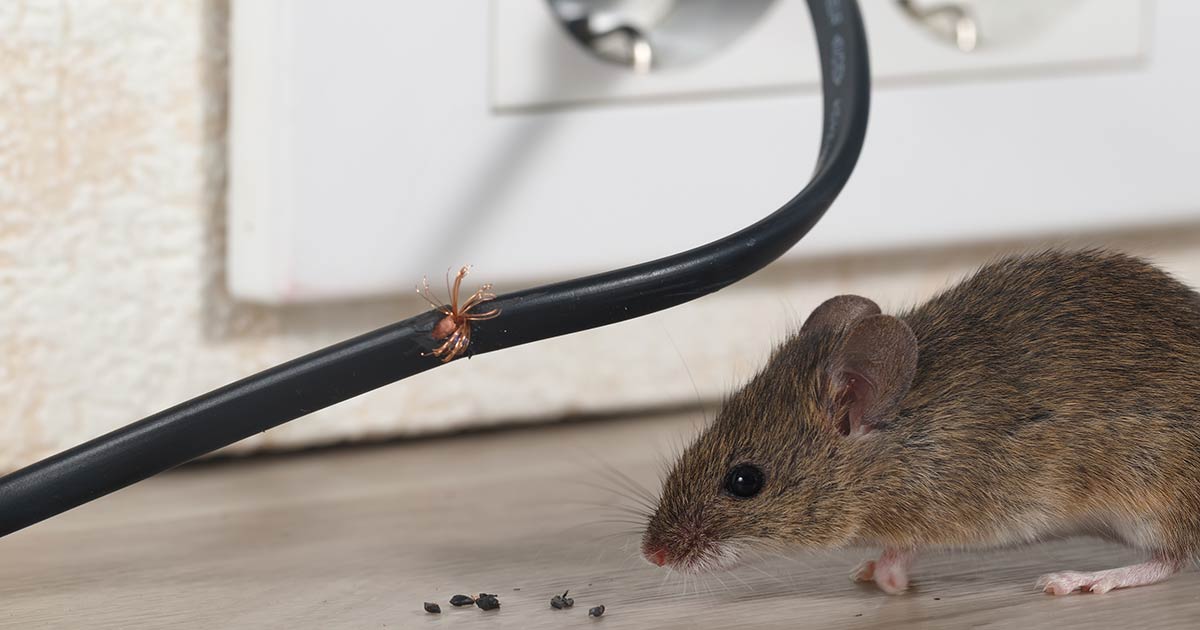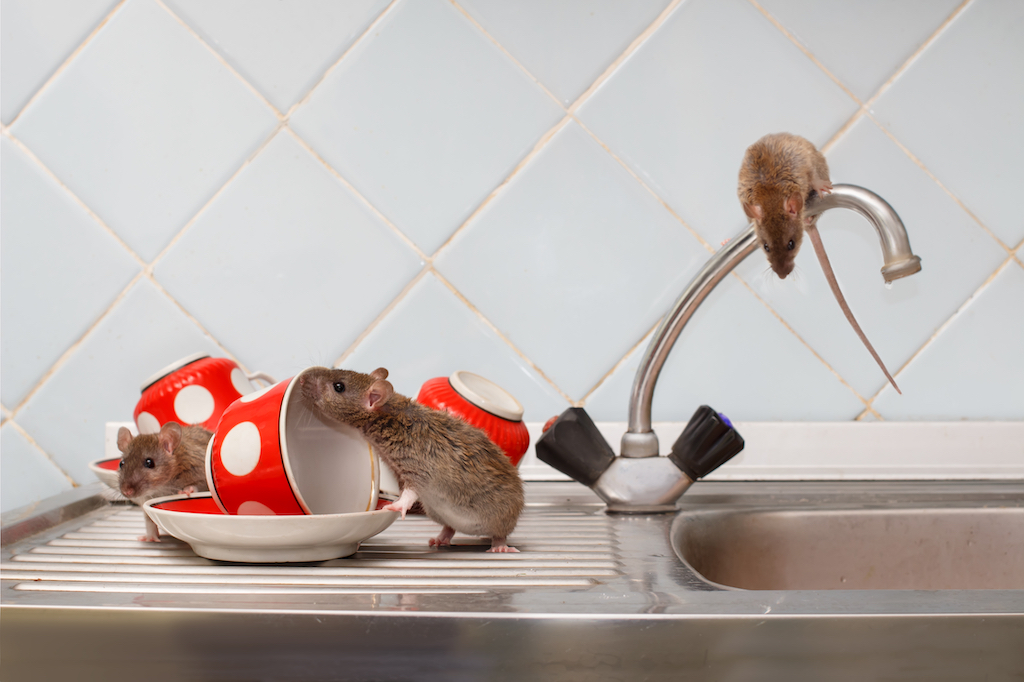Rodent Treatments in Florida:
Exterminator Services for Boca Raton, Deerfield Beach, and Delray Beach
Florida’s sun-soaked lifestyle, moderate winters, and lush landscaping draw countless residents and visitors each year. Yet these same subtropical conditions can also invite unwelcome critters—especially rodents. Rats, mice, and other small mammals find Florida’s climate and resources ideal for breeding, nesting, and thriving. When these pests infiltrate homes or businesses, they pose risks that include contaminated food, structural damage, and potential disease transmission. Residents in Boca Raton, Deerfield Beach, and Delray Beach face a year-round need for vigilance and effective rodent treatments to keep their properties safe and clean. This page highlights the environmental factors behind Florida’s rodent challenges, the early signs of an infestation, and how a dedicated rodent exterminator can remove these pests and prevent their return.
Why Rodents Flourish in Florida

- Warm, Mild Winters
In many colder regions, sub-freezing temperatures help curb rodent populations by limiting foraging opportunities. Florida’s moderate winter rarely drops low enough to stifle rodent activity. As a result, rats and mice can reproduce throughout the year, experiencing minimal breaks in their life cycles. This uninterrupted pattern means a small incursion can balloon into a significant infestation in a matter of months if left unchecked. - High Humidity and Rainfall
Dampness and humidity are crucial for rodents seeking constant water sources. Florida’s regular showers ensure that lawns, shrubs, and sewers remain moist, providing ideal conditions for rats and mice to survive outdoors. Whenever heavy rain or flooding disrupts their ground-level nests, rodents may migrate to higher or drier sites—oftentimes human structures with easy entry points. - Plentiful Food Resources
Rodents take advantage of the wide variety of edible scraps available in suburban and urban environments. From pet food bowls on patios to unsealed garbage bins, any overlooked morsel becomes a potential meal. In bustling communities like Boca Raton and Delray Beach, abundant dining and outdoor food service create more attractions for these opportunistic pests. - Minimal Seasonal Dormancy
In areas with brutal winters, rodents face natural population checks that do not exist in Florida. The warm temperatures year-round, combined with mild fluctuations, let rats and mice remain active nearly every month. This allows them to rebound swiftly from partial control measures or seasonal dips in numbers. - Ongoing Development
As new homes and commercial buildings emerge in Deerfield Beach, landscaping and construction can drive rodents from their former habitats. Seeking refuge, they may infiltrate fresh structures if small gaps, cracks, or utility line openings go unsealed. Similarly, older buildings with wear and tear often have hidden vulnerabilities that rodents exploit.
Common Rodent Species in Florida
- Roof Rats (Rattus rattus)
Sometimes called “fruit rats,” roof rats are agile climbers, favoring high areas such as attics or upper floors. They frequently travel via tree branches or power lines to reach roofs, entering through damaged vents or eaves. This species typically has a slender build, dark fur, and a hairless tail longer than its head and body combined. - Norway Rats (Rattus norvegicus)
Heavier and bulkier than roof rats, Norway rats generally nest at ground level or in burrows. With robust bodies, shorter tails, and blunt noses, they often occupy basements, crawl spaces, or lower floors. They gnaw steadily through wood, plastic, or other barriers to access food and water. - House Mice (Mus musculus)
Small and light-brown or gray, house mice breed rapidly and can adapt to a broad range of indoor and outdoor conditions. Their ability to slip through dime-sized holes, combined with multiple litters per year, makes them particularly troublesome. Mice tend to nest in walls, closets, or hidden corners near food sources. - Field Mice or Deer Mice
More prevalent in rural or semi-rural locales, these mice venture into homes if they detect convenient meals or cozy nesting sites. With a two-tone coat and a relatively larger head, they sometimes enter garages or sheds, especially when local fields or outdoor habitats experience flooding.
Regardless of species, once rodents settle indoors, they look for quiet, rarely visited spots to nest and access to steady food. Identifying the precise rodent type helps shape the most effective control strategy for your property.
Dangers of Unaddressed Rodent Infestations
- Health Risks
Rodents contaminate living spaces through droppings, urine, and fur. They can carry parasites such as fleas or ticks, as well as pathogens that pose disease risks. Salmonella, hantavirus, and other bacteria or viruses may spread if homeowners handle contaminated items or ingest foods that rodents have touched. - Structural and Material Damage
Rats and mice constantly chew to keep their incisors from growing too long. Cables, wooden beams, plastic piping, and insulation all become targets. In some instances, rodent-gnawed wiring leads to dangerous electrical shorts or fire hazards. - Rapid Reproduction
One breeding pair can produce numerous pups in just a couple of months. Without quick intervention, rodent populations can skyrocket, extending to multiple floors and making eradication more complex. - Persistent Stress
Discovering droppings or hearing squeaking behind walls can cause anxiety, hamper daily routines, or even disrupt sleep. In business settings, sightings of rodents compromise a brand’s reputation and may result in negative reviews or health code violations.

Detecting Rodent Activity
- Droppings
Rodent droppings are often the clearest sign. Mice leave small, rice-like pellets, while rat droppings are larger, capsule-shaped. Newer droppings appear darker and shiny; older ones turn gray and crumbly. - Gnaw Marks
Teeth marks on food packaging, baseboards, or wires indicate rodent presence. Mice might create tiny holes, while rats produce more substantial damage. You may also see shredded materials they use for nesting. - Nocturnal Noises
Rats and mice typically move around at night. If you hear scurrying or scratching in attics, inside walls, or under floors when the house is otherwise quiet, suspect a rodent presence. - Nests
Shredded paper, cloth, or insulation can form cozy nests in hidden corners. Rodents keep these nests near food and water sources if possible. - Grease Rubs or Smear Marks
As rodents scurry along walls or rafters, the oil in their fur leaves smudges. These marks can appear as dark trails near frequently traveled routes or entry holes.
Rodent Exterminator Techniques
- Inspection and Assessment
A comprehensive process starts by mapping out probable rodent entry points and nests. An experienced exterminator checks basements, attics, crawl spaces, and exterior perimeters. Spotting droppings, gnaw marks, or well-worn trails helps determine whether rats, mice, or both are present. - Sealing Entry Points
Because rodents can squeeze through incredibly tight openings, closing up cracks, using weatherstripping, and placing metal screens over vents remain essential. This preventive step halts ongoing infiltration. Installing door sweeps, repairing foundation gaps, and using steel wool in small holes deprives rodents of easy passage. - Traps and Baits
The most effective rodent treatments often combine mechanical traps (e.g., snap traps, multi-catch traps) with tamper-resistant bait stations. Strategic placement along rodent runways or around nesting zones ensures that rodents encounter traps frequently. Baits containing slow-acting toxins let rodents return to their nests before succumbing, reducing the chance of new or pregnant females escaping the effect. - Sanitation and Cleanup
Eliminating accessible food remains vital. Sealed garbage bins, airtight containers for pantry goods, and immediate cleanup of spills or crumbs reduce the attractiveness of your property. Clearing clutter from storage areas helps rodent detection and removes potential nesting materials. - Follow-Up Visits
Because rodents reproduce quickly, a single service might not eradicate an established colony entirely. Multiple check-ups confirm whether fresh droppings appear, traps keep catching rodents, or new holes have emerged. Maintenance treatments or periodic inspections ensure no re-infestation arises.
Service Areas: Boca Raton, Deerfield Beach, and Delray Beach
Our rodent treatments and exterminator services operate across Boca Raton, Deerfield Beach, and Delray Beach. Each community has distinct neighborhoods, a variety of building types, and active outdoor environments—factors that can encourage rodent presence without consistent oversight.
- Boca Raton: Known for upscale residences and waterfront properties, Boca Raton’s beautifully landscaped yards and mild winter climate invite rodents if they detect open garbage or unsealed eaves.
- Deerfield Beach: A coastal destination with a vibrant commercial sector, Deerfield Beach sees heavy foot traffic around dining venues, creating accidental rodent feeding hotspots.
- Delray Beach: A blend of bustling downtown districts and quiet residential zones means rats or mice can slip from alleyways to home gardens, especially when yard care or sanitation lapses.
Taking proactive steps early deters small rodent sightings from swelling into widespread infestations that demand extensive structural repairs or disrupt daily life.

Why Choose Our Rodent Control Services
- Florida-Specific Expertise
Not all climates require the same strategies. Because rodents in Florida remain active most of the year, professionals experienced in local conditions tailor every approach to the region’s unique environment, identifying exactly which species to target and how to block re-entry effectively. - Systematic Assessment
Our thorough inspection techniques ensure we locate hidden nests, identify probable runways, and isolate areas that require sealing or sanitation improvements. This approach halts rodents at the source rather than chasing stragglers with short-lived solutions. - Focused, Safe Trapping Methods
Treatments revolve around traps and baits strategically positioned to limit exposure to non-target animals or children. This emphasis on precision fosters a safer environment during and after extermination. - Emphasis on Exclusion
Perhaps the most critical part of rodent treatments involves physically barring rodents from entry. By meticulously plugging holes, repairing damaged screens, or installing door sweeps, we prevent fresh migrations inside. - Follow-Up and Prevention
Post-treatment inspections reveal whether the colony is completely gone or if pregnant females left behind newly born litters. When needed, we refine our approach to eradicate any remaining rodents and help residents maintain a rodent-free zone through practical tips on food storage and yard upkeep.
Next Steps
If you detect droppings, hear nocturnal rustling, or suspect rodent movement in Boca Raton, Deerfield Beach, or Delray Beach, do not wait. Contact us to learn more or schedule your service. A prompt exterminator visit can evaluate the situation and detail a customized plan that removes mice or rats from your property for the long term.
Rodent incursion not only disrupts daily routines but also risks contaminating food, damaging wiring, and possibly spreading disease. Early intervention saves you from the anxiety and potential structural issues that escalate with time. Returning to a rodent-free living or working space preserves both your health and peace of mind.
Maintaining a Rodent-Free Lifestyle in Florida
Achieving ongoing rodent control in a mild, subtropical climate demands a balanced combination of careful building maintenance, conscientious sanitation, and professional expertise. While a complete one-time treatment can sharply reduce the rodent population, maintaining a clean environment and blocking fresh access points ensures new rodents do not simply take their place.
Think of it as a cycle: remove existing rodents, seal vulnerabilities, adopt better storage practices, and schedule periodic checks if your property sits in a high-risk zone. This integrated approach stands up to Florida’s never-ending rodent breeding potential. With dedicated attention, you shield your home or business from unsightly droppings, sleepless nights, and the hidden hazards of chewing on wiring or structural beams.
Whether you own a waterfront residence in Boca Raton, manage a restaurant in Deerfield Beach, or rent a storefront in Delray Beach, consistent vigilance is your best ally against rodent intrusions. By acting swiftly at the earliest sign—be it an unexplained rustling or droppings behind the fridge—you keep small issues from maturing into significant invasions. Teaming up with a professional extermination service harnesses local knowledge, efficient products, and proven tactics to deliver the safe, rodent-free atmosphere every property owner desires.
